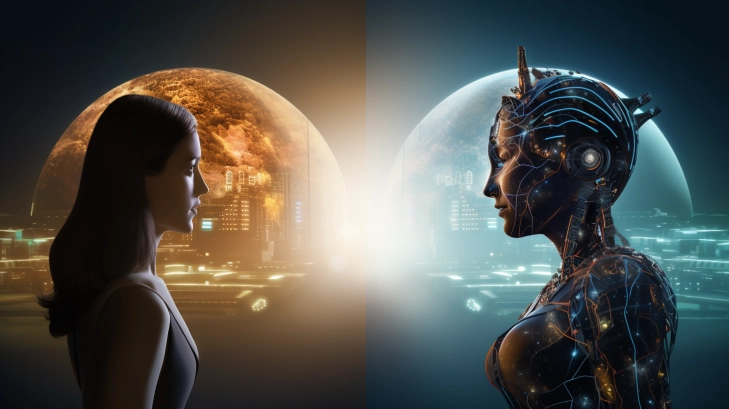Table of Contents
During the AWS re: Invent conference, Amazon unveiled its latest addition to the AI image creation and concern field – the Titan text-to-image AI model. This innovative tool, known as Titan Image Generator, is designed to produce high-quality images that resemble real-life studio shots. Notably, it incorporates protective measures to prevent toxicity and bias.
Rather than being a standalone platform, Titan serves as a foundation for developers to construct their own image generators utilizing this model. To utilize this technology, developers must have access to Amazon Bedrock.
Ethical Implications of AI Image Creation And Concern
Amazon has unveiled its latest addition to the Titan family of generative AI models, the Titan Image Generator, during a keynote. This new tool is now available for preview to AWS customers on Bedrock, Amazon’s AI image creation and concern development platform. With the Titan Image Generator, users can either create new images based on a text description or customize existing images.
Amazon claims that AI image creation and concern Titan Image Generator underwent training using a wide variety of datasets from various domains, and can be further customized with personal datasets. The tool also features built-in measures to address toxicity and bias, although their effectiveness remains to be seen.
However, Amazon has not disclosed the sources of these datasets, nor have they confirmed if they have obtained permission or provided compensation to the creators of the AI image creation and concern used in the training process.
During his keynote, Swami Sivasubramanian, AWS vice president of database, analytics, and machine learning, provided a sneak peek of Titan Image Generator. He emphasized that this model goes beyond generating images based on natural language prompts, as it also allows for background customization.

Watermarking AI-Generated Images: Amazon’s Approach
Unlike popular image generators such as OpenAI’s DALL-E, Titan Image Generator is specifically designed to cater to the needs of enterprise users.
Vasi Philomin, the vice president for generative AI at AWS, informed The Verge that all AI image creation and concern generated by Titan Image Generator will come with invisible watermarks as per the voluntary commitments made by Amazon with the White House in July.
During an interview, Philomin expressed the need for a method to indicate that an image was produced using AI image creation and concern, particularly with Titan Image Generator, without affecting its appearance, causing any delay, or being susceptible to cropping or compression.
The watermark, as he mentioned, extends beyond the file’s metadata. However, the challenge lies in detecting the invisible watermark. Amazon has developed an API that allows users to connect and verify the image’s origin. This is intentional, as Titan Image Generator is a model and not a final product. Therefore, developers using it will have the freedom to decide how to present this information to their users.
C2PA Standards and Amazon’s Legal Safeguards
The Biden administration’s executive order on AI image creation and concern emphasizes the importance of watermarking or labeling content as AI-generated. To tackle this issue, prominent companies such as Microsoft and Adobe have implemented the Content Credentials system created by the Coalition for Content Provenance and Authenticity (C2PA).
Going beyond, Adobe has introduced an icon that signifies content credentials in both image and video content.
Sivasubramanian further revealed the widespread accessibility of additional Titan variants: Titan Text Lite, a compact model designed for less demanding text generation assignments such as copywriting; and Text Express, tailored for more extensive applications like conversational chat apps.
Amazon is set to offer copyright indemnity to users of its Titan foundation models, which includes text-to-image. Additionally, the company will provide legal protection to individuals who utilize any of its AI applications, regardless of whether the app is based on a different foundation model found in its Bedrock AI model repository, such as Meta’s Llama 2 or Anthropic’s Claude 2.
These applications consist of AWS HealthScribe, CodeWhisperer, Amazon Personalize, Amazon Lex, and Amazon Connect Contact Lens.





